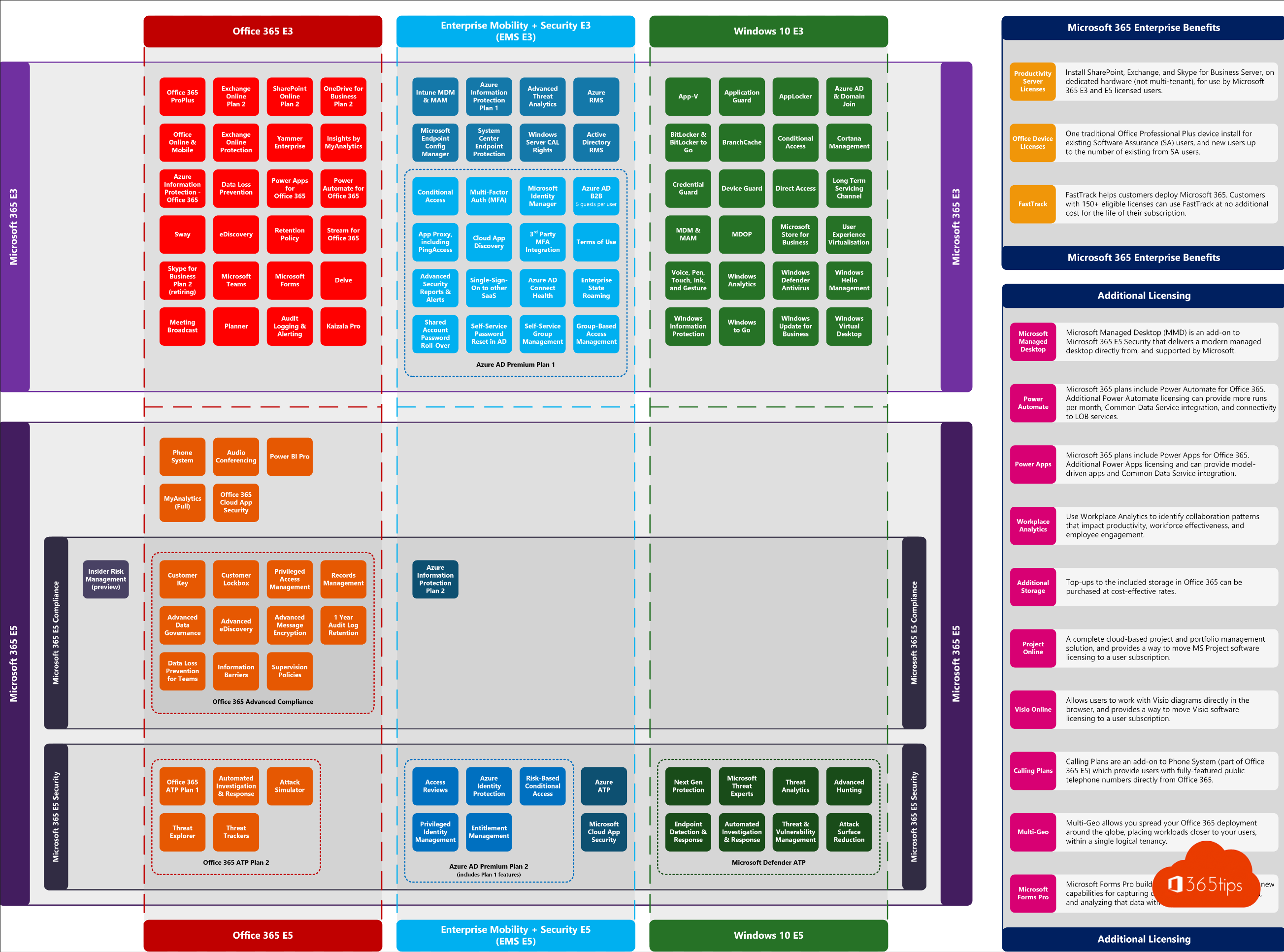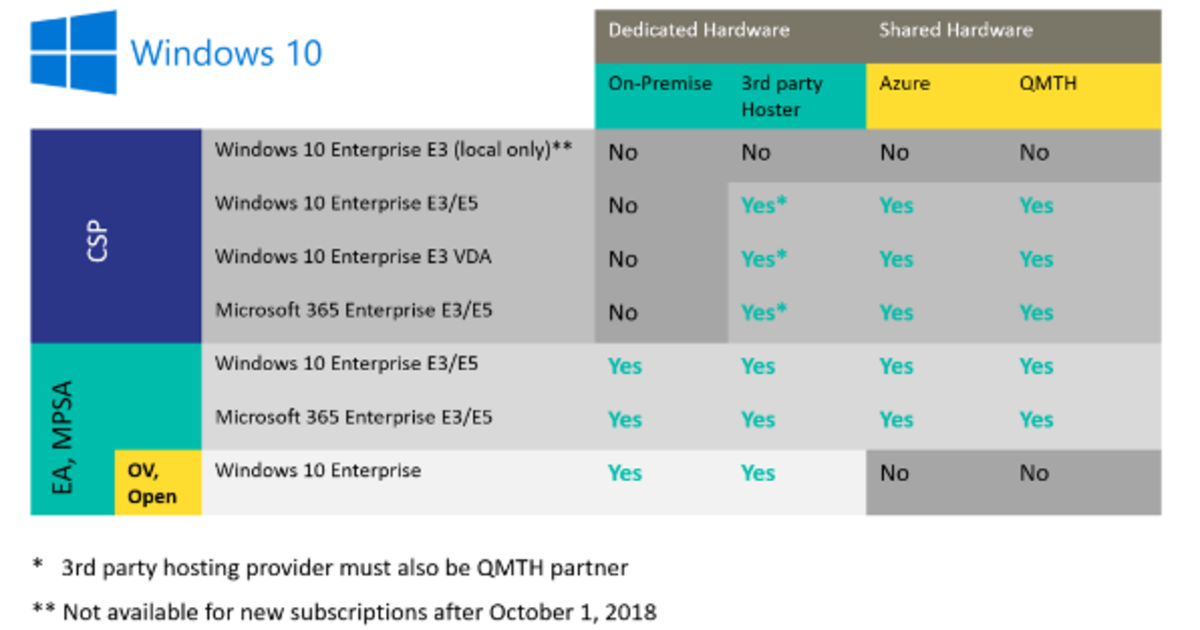Microsoft 365 Enterprise
- Microsoft 365 Enterprise 3
- Microsoft 365 Enterprise 5
- Microsoft 365 Enterprise Administrator
- What Is Microsoft 365 Enterprise
- Microsoft 365 Enterprise Vs Business
Microsoft 365 Enterprise 3
You can manage Microsoft 365 user accounts in several different ways, depending on your configuration. You can manage user accounts in the Microsoft 365 admin center, PowerShell, in Active Directory Domain Services (AD DS), or in the Azure Active Directory (Azure AD) admin portal.
Collaborate for free with online versions of Microsoft Word, PowerPoint, Excel, and OneNote. Save documents, spreadsheets, and presentations online, in OneDrive. Microsoft Office 365 - en-us is a software program developed by Microsoft. The most common release is 16.0.8730.2127, with over 25% of all installations currently using this version. During setup, the program registers itself to launch on boot through a Windows Schedule Task in order to automatically start-up. Microsoft 365 Enterprise is a solution which combines Office 365, Windows 10 Enterprise license, and Microsoft Enterprise Security and Mobility (EMS) including Microsoft Intune in a bundled form. Microsoft 365 is designed for large organizations, as well as medium-sized and small business which require the latest security and compliance features.
As soon as you purchase Microsoft 365, the Microsoft 365 admin center and PowerShell can be used to manage accounts. When managing cloud identities, every person in your organization has a separate user account name and password. If you want to integrate with your on-premises infrastructure and have user accounts synchronized with Microsoft 365, you can use Azure AD Connect to provide synchronization of identities and passwords for single sign-on (SSO) functionality.
Plan for where and how you will manage your user accounts
Where and how you can manage your user accounts depends on the identity model you want to use for your Microsoft 365. The two overall models are cloud-only and hybrid.
Cloud-only
You create and manage users in the Microsoft 365 admin center. You can also use PowerShell or the Azure AD admin center.
Hybrid
User accounts are synchronized with Microsoft 365 from AD DS, so you must use on-premises AD DS tools to manage user accounts.
Managing Accounts

When deciding which way your organization will create and manage accounts, consider the following requirements:
The directory synchronization software needs to be installed on servers within your on-premises environment to connect the identities between Microsoft 365 and your AD DS.
Any directory synchronization option, including SSO options, requires that your AD DS attributes meet standards. The specifics of what attributes are used in your directory and what cleanup (if any) is needed are described in Prepare for directory synchronization to Microsoft 365.
Plan how you are going to create Microsoft 365 accounts.
The following table lists the different account management tools.
| Tool | Notes |
|---|---|
| Microsoft 365 admin center | Add users individually or in bulk Provides a simple web interface to add and change user accounts. Can't be used to change users if directory synchronization is enabled (location and license assignment can be set). Can't be used with SSO options. |
| Windows PowerShell | Manage Microsoft 365 with Windows PowerShell Allows you to add users in bulk users by using a Windows PowerShell script. Can be used to assign location and licenses to accounts, regardless of how the accounts are created. |
| Bulk import | Add several users at the same time Allows you to import a CSV file to add a group of users to Microsoft 365. Can't be used with SSO options. |
| Azure AD | You get a free edition of Azure AD with your Microsoft 365 subscription. You can perform functions like self-service password reset for cloud users, and customization of the Sign-in and Access Panel pages by using the free edition. To get enhanced functionality, you can upgrade to the basic edition, Azure AD Premium P1, or Azure AD Premium P2. See Azure AD editions for the list of supported features. |
| Directory synchronization | Integrating your on-premises identities with Azure AD For directory synchronization with or without password synchronization, use Azure AD Connect with express settings. For multiple forests and SSO options, use Custom Installation of Azure AD Connect. Provides the infrastructure that's necessary to enable SSO. Required for many hybrid scenarios such as staged migration and hybrid Exchange Synchronizes security and mail-enabled groups from your AD DS. |

Regardless of how you intend to add the user accounts to Microsoft 365, you need to manage several account features, such as assigning licenses, specifying location, and so on. These features can be managed long-term from the Microsoft 365 admin center or you can also create user accounts with PowerShell.
If you choose to add and manage all your users through the admin center, you will specify the location and assign licenses at the same time as creating the Microsoft 365 account. As a result, not much planning is required.
Important
Creating accounts in Microsoft 365 without assigning a license (to SharePoint Online, for example) means that the account owner can view the Microsoft 365 center but can't access any of the services within your company's subscription. After you assign a location and the license, the account is replicated to the service or services that you assigned. The user can sign in to their account and use the services that you assigned to them.
See also
Microsoft 365 Enterprise is a solution which combines Office 365, Windows 10 Enterprise license, and Microsoft Enterprise Security and Mobility (EMS) including Microsoft Intune in a bundled form. Microsoft 365 is designed for large organizations, as well as medium-sized and small business which require the latest security and compliance features.
Microsoft 365 Enterprise has three plans: E3, E5, and F3. The detailed comparison between Microsoft 365 plans F3 vs E3 vs E5 is given below.
Submit an enquiry. Schedule a call back right away!
- ✓ Free Migration*
- ✓ 24/7 expert support
- ✓ Talk to Microsoft-certified experts

Microsoft 365 Enterprise | MICROSOFT 365 F3(formerly Microsoft 365 F1) | Microsoft 365 E3 | Microsoft 365 E5 | |
|---|---|---|---|---|
| $10.00 user/month Start Trial | $32.00 user/month Start Trial | $57.50 user/month Start Trial | ||
| Operating system Edition | ||||
| Windows Enterprise | ||||
| Apps | ||||
| Word, Excel, PowerPoint, OneNote | Web only | |||
| Access | ||||
| Email, Document & Storage | ||||
| Outlook, Exchange, OneDrive for Business | ||||
| Chat based workspace | ||||
| Microsoft Teams | ||||
| Schedule & Task Management | ||||
| PowerApps, and Flow | ||||
| Voice, video and meetings | ||||
| Microsoft Teams | ||||
| Audio Calls, Phone System | ||||
| Social and intranet | ||||
| SharePoint, Yammer | ||||
| Threat Protection | ||||
| Microsoft Advanced Threat Analytics, Windows Defender Antivirus, Device Guard | ||||
| Windows Defender Advanced Threat Protection, Office 365 Advanced Threat Protection, Office 365 Threat Intelligence | ||||
| Identity and access management | ||||
| Azure Active Directory P1 Credential Guard and Windows Hello | ||||
| Azure Active Directory Plan 2 | ||||
| Device and App management | ||||
| Microsoft Intune Fine Tuned User Experience, Windows Autopilot and Windows Analytics Device Health | ||||
| Windows Autopilot, Fine Tuned User Experience, and Windows Analytics Device Health | ||||
| Information Protection | ||||
| Windows Information Protection and BitLocker, Azure Information Protection P1 | ||||
| Office 365 Data Loss Prevention | ||||
| Azure Information Protection P2, Microsoft Cloud App Security, Office 365 Cloud App Security | ||||
| Advanced compliance | ||||
| Advanced eDiscovery, Customer Lockbox, Advanced Data Governance | ||||
| $10.00 user/month Start Trial | $32.00 user/month Start Trial | $57.50 user/month Start Trial | ||
Features of Microsoft 365 Enterprise Plans by Apps4Rent
FAQs: Microsoft 365 Enterprise Plans
What is the difference between Microsoft 365 E3 and E5 plan?
Microsoft 365 E3 allows you to access core products inside Microsoft 365, while E5 allows you to access the recent up to date products and features inside Microsoft 365. The E5 plan has all the features of E3, in addition to advanced threat protection, collaboration, security, voice, and data analysis tools.
What is the difference between Microsoft 365 Enterprise and Microsoft 365 Business?
Microsoft 365 Enterprise is designed for large scale organizations with more than 300 users, while Microsoft 365 Business has the upper limit of 300 users. In comparison to Microsoft 365 Business, Microsoft 365 Enterprise offers sophisticated, advanced plans for Compliance and Security management, specially designed for the enterprise customers.
Who will provide the support?
Microsoft 365 Enterprise 5
Our team will work just like your internal IT team and we provide extensive Support beyond Microsoft for anything and everything. You can contact us 24/7 via phone, chat, and email. Our Microsoft-certified engineers are always available to resolve your issues.
IS MICROSOFT 365 F3 PLAN SIMILAR TO THE CORRESPONDING OFFICE 365 PLANS?
Like E3 and E5 plans, Microsoft 365 F3 (Formerly MICROSOFT 365 F1) has everything from corresponding Microsoft 365 plan. Basically, the F3 plan is suitable for frontline workers who are the first point of contact to your customers.
What is the best way to deploy Microsoft 365 Enterprise?
Microsoft 365 Enterprise Administrator
Deploying Microsoft 365 Enterprise is best left to experts. Partner-assisted deployment is the best way as organizations can leverage the extensive experience of the partner. Contact a Microsoft partner like Apps4Rent which is well-equipped to help you understand your options and make the best recommendations for deploying Microsoft 365 plans in your organization.
Do you have an annual contract?
What Is Microsoft 365 Enterprise
We do not tie our customers with lengthy contracts. We adopt a ‘pay-as-you-go’ model which means you pay monthly. Increase or reduce the number of licenses as per your requirements. For less than 300 users, see Microsoft 365 Business plans.
Microsoft 365 Enterprise Vs Business
Submit Your Requirements

/cdn.vox-cdn.com/uploads/chorus_image/image/58537369/microsoftofficestock.0.jpg)